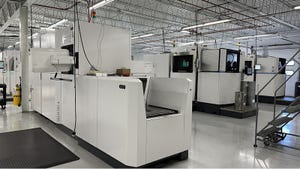December 16, 2011

A new class of materials based on nanocomposites may help to detect sources of failure in an aircraft's primary structures such as cracks and delamination.
A research team in the Mechanics and Aerospace Design Lab at the University of Toronto, is working on the development of these self-monitoring adhesives that will join structural elements. The materials may be one part of the solution for coping with the dramatic rise of composite materials in commercial aircraft structures and the lack of associated industry-wide repair knowledge.
The team, led by Professor Shaker Meguid, is developing multi-functional, nano-tailored composites for use as adhesives. The rise of other composite materials in commercial aircraft primary structures has been accompanied by a parallel rise in the use of structural adhesives for joining them together, and for joining them to structures made of other composite materials or metals.

For these types of joints, structural adhesives are usually preferred over mechanical fastening or welding for several reasons. Fasteners weigh more and create localized areas of stress where they are joined to the composite or metal. Joints made with welds may be subject to phase transformation, as well as additional stress in the weld region. By contrast, adhesive bonding is more uniform, lighter in weight, lacks stress points, and is performed at lower temperatures.
The research team wants to convert polymeric thermoset adhesive resins into multifunctional materials that can simultaneously perform many structural and non-structural functions. This multifunctionality will be achieved via dispersing very small amounts, such as concentrations of 0.1 to 2 percent, of carbon nanotubes and nanowires.
The carbon nanotubes and nanowires are electrically conductive, giving the new resins improved electro-mechanical properties. Currently, the research team is investigating how uniformly dispersed, aligned, and agglomerated carbon nanotubes affect the electrical conductivity of multifunctional nanocomposites. To determine the current's continuity and its level of critical percolation, the team is using a different approach that involves a novel type of network recognition.
About the Author(s)
You May Also Like



